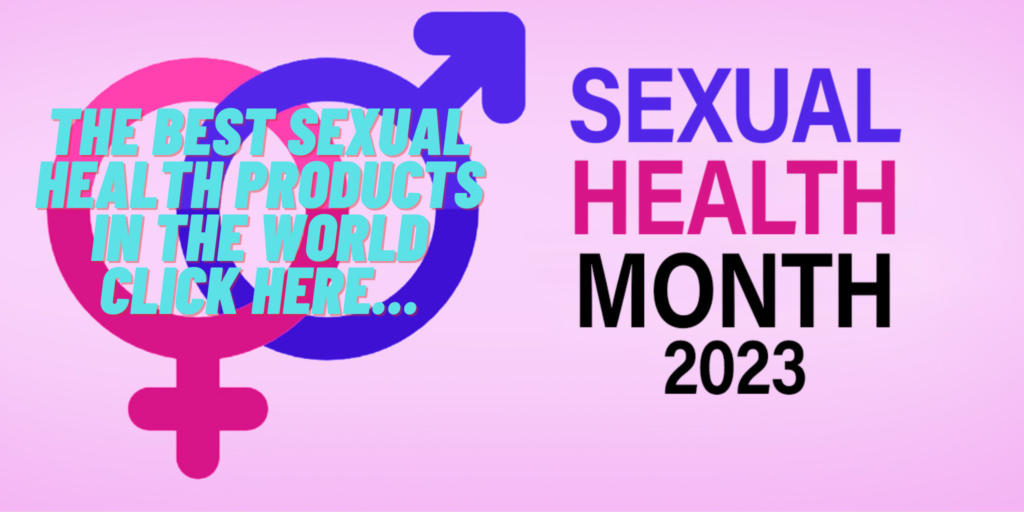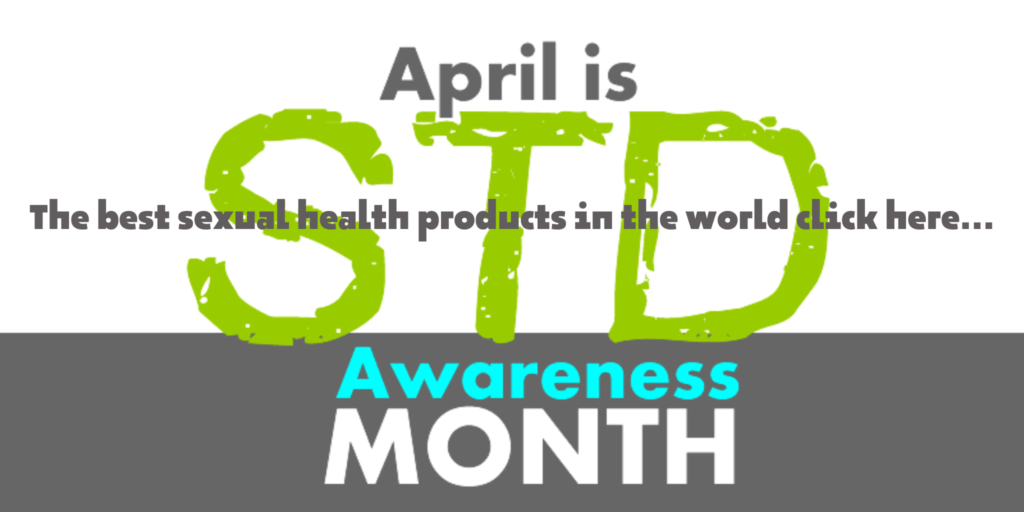
Introduction
In the vast landscape of human well-being, sexual health is a foundational pillar that often remains shrouded in mystery and misconceptions. It is not merely the absence of disease or the act of reproduction but rather a multifaceted dimension of our lives that extends to emotional, psychological, and interpersonal realms. This comprehensive guide aims to unlock the secrets to a fulfilling sexual health, offering expert tips and advice curated for those who seek not just physical satisfaction but also emotional and relational harmony.
Understanding the Significance of Sexual Health
Sexual health is a vital component of a person’s overall health and quality of life. It encompasses the entirety of an individual’s sexual experience, from the biological aspects of sexual function to the emotional bonds formed through intimacy. A fulfilling sexual life is more than just a pursuit of pleasure; it is a fundamental human right and a cornerstone of healthy relationships.
The Prevalence of Sexual Health Challenges
Despite its undeniable importance, sexual health often remains a taboo topic in many societies. This lack of open discourse can lead to misunderstandings, misinformation, and a reluctance to seek help when needed. It’s important to recognize that sexual health challenges are common, affecting individuals of all genders, ages, and backgrounds.
Breaking Down the Stigma
One of the crucial steps in unlocking the secrets to fulfilling sexual health is breaking down the stigma that surrounds it. It’s time to recognize that seeking information and assistance regarding sexual health is not a sign of weakness or moral failing. It is a proactive step towards a healthier, happier, and more satisfying life.
A Holistic Approach
In this guide, we emphasize a holistic approach to sexual health. This means acknowledging that sexual well-being goes far beyond the physical act of sex. It encompasses emotional connection, understanding one’s body, nurturing healthy relationships, and making informed decisions.
Empowering Through Knowledge
Education is a powerful tool for empowerment. By providing expert insights and evidence-based advice, we aim to equip you with the knowledge and tools necessary to make informed choices about your sexual health. Whether you are seeking information about sexually transmitted diseases, contraception, reproductive health, sexual education, or overall sexual well-being, our goal is to provide you with the resources you need to take control of your sexual health journey.
1. STDs: Awareness and Prevention

Sexually Transmitted Diseases (STDs), also known as sexually transmitted infections (STIs), are a group of infections that spread primarily through sexual contact. They pose a significant public health concern and can have serious consequences if left untreated. Awareness and prevention are essential components of managing the risks associated with STDs.
Understanding STDs
STDs encompass a wide range of infections caused by bacteria, viruses, and parasites. Some of the most common STDs include:
- Chlamydia: Caused by the bacterium Chlamydia trachomatis, this infection often presents with mild or no symptoms but can lead to serious reproductive health issues if left untreated.
- Gonorrhea: Caused by the bacterium Neisseria gonorrhoeae, gonorrhea can affect the genital tract, rectum, and throat. It can lead to pelvic inflammatory disease (PID) and infertility.
- Human Immunodeficiency Virus (HIV): HIV weakens the immune system, making the body vulnerable to other infections. Without treatment, it can progress to acquired immunodeficiency syndrome (AIDS).
- Syphilis: Caused by the bacterium Treponema pallidum, syphilis can progress through various stages, affecting multiple organ systems if untreated.
- Herpes Simplex Virus (HSV): There are two types of HSV—HSV-1 and HSV-2. Both can cause genital herpes, a recurring viral infection.
- Human Papillomavirus (HPV): HPV is a group of viruses that can lead to genital warts and is linked to various cancers, including cervical cancer.
Prevention Strategies
Preventing the transmission of STDs is paramount for sexual health. Here are expert strategies for awareness and prevention:
- Safe Sex Practices: Consistently and correctly using latex or polyurethane condoms during sexual activity can significantly reduce the risk of STD transmission. However, it’s important to note that condoms may not provide complete protection for some STDs like herpes and HPV, as they can infect areas not covered by the condom.
- Regular Testing: Regular testing for STDs is essential, especially if you are sexually active with multiple partners or have a new sexual partner. Early detection and treatment are crucial for preventing complications and further transmission. Many STDs, including chlamydia and gonorrhea, can be asymptomatic, so testing is the only way to know for sure.
- Vaccination: Vaccines are available to prevent some STDs, such as the HPV vaccine, which helps protect against certain types of HPV that can lead to cancer. It’s recommended for both males and females, typically starting in adolescence.
- Screening and Partner Communication: Discuss your sexual history with your healthcare provider and get screened for STDs as part of your routine healthcare. Open and honest communication with sexual partners is also crucial. Knowing each other’s STD status and discussing prevention methods can help reduce the risk.
- Pre-Exposure Prophylaxis (PrEP): PrEP is a preventive medication for HIV. It’s recommended for individuals at high risk of HIV infection, such as those with HIV-positive partners or individuals engaging in high-risk behaviors.
- Avoiding High-Risk Behaviors: Limiting the number of sexual partners and avoiding risky sexual behaviors like unprotected sex, sharing needles or drug paraphernalia, and engaging in sexual activities under the influence of substances can significantly reduce the risk of STD transmission.
- Routine Healthcare: Regular visits to a healthcare provider for sexual health check-ups and education on safe sex practices can play a pivotal role in STD prevention.
In conclusion, awareness and prevention are key to reducing the prevalence and impact of STDs. By staying informed about the risks, practicing safe sex, getting tested regularly, and maintaining open communication with sexual partners, individuals can take proactive steps to protect their sexual health and well-being. Remember, STDs are preventable and treatable, and early intervention can make a significant difference in your overall health.
2. Contraception: Making Informed Choices

Contraception, also known as birth control, plays a pivotal role in sexual health by allowing individuals and couples to plan their families and prevent unintended pregnancies. However, choosing the right contraceptive method requires careful consideration and informed decision-making.
The Range of Contraceptive Options
Contraception offers a wide array of choices to suit different preferences and needs. Each method has its own advantages and considerations, making it crucial to select the one that aligns with your lifestyle, health, and reproductive goals. Here are some common contraceptive methods:
- Hormonal Methods: These methods, including birth control pills, patches, injections, and hormonal intrauterine devices (IUDs), use hormones (typically estrogen and/or progestin) to prevent pregnancy. They are highly effective when used correctly and can offer additional benefits like menstrual regulation and reduced acne.
- Barrier Methods: Condoms, both male and female, diaphragms, and cervical caps are considered barrier methods. They physically block sperm from reaching the egg and provide some protection against sexually transmitted infections (STIs). Condoms are the only method that offers dual protection against pregnancy and STIs.
- Long-Acting Reversible Contraceptives (LARCs): LARCs, such as hormonal IUDs and contraceptive implants, provide contraception for an extended period (several years) without requiring daily or weekly attention. They are highly effective but require a healthcare provider for insertion and removal.
- Permanent Methods: Sterilization procedures like tubal ligation for women and vasectomy for men are considered permanent methods of contraception. They are typically chosen when individuals or couples are certain they do not want to have more children.
- Emergency Contraception: This is a backup method used after unprotected sex or contraceptive failure (e.g., a broken condom). Emergency contraception should not be used as a regular form of birth control but can help prevent pregnancy when needed.
Effectiveness and Considerations
Effectiveness rates vary among contraceptive methods. Some factors to consider when making your choice include:
- Consistency: The effectiveness of most methods depends on consistent and correct use. Forgetting to take birth control pills or not using condoms consistently can reduce their efficacy.
- Health Considerations: Your overall health, including any underlying medical conditions, can impact the suitability of certain contraceptive methods. It’s essential to consult with a healthcare provider to ensure the chosen method is safe for you.
- STI Protection: While most contraceptives focus on preventing pregnancy, only condoms offer dual protection by reducing the risk of both pregnancy and STIs.
- Reversibility: Some methods, like sterilization, are permanent and not easily reversible. Long-acting methods, while highly effective, require a healthcare provider for removal if you decide to conceive.
- Cost and Accessibility: Consider the cost and accessibility of the chosen method. Some methods may be covered by insurance, while others require ongoing expenses.
Consulting a Healthcare Provider
Choosing the right contraceptive method is a personal decision that should be made in consultation with a healthcare provider. A healthcare provider can evaluate your health, discuss your reproductive goals, and provide guidance on the most suitable options. They can also address any concerns or side effects you may have and help you switch to a different method if needed.
In conclusion, contraception is a vital aspect of sexual health, allowing individuals and couples to make choices about family planning and prevent unintended pregnancies. To make informed choices, consider your health, lifestyle, and reproductive goals, and consult with a healthcare provider for guidance. Remember that contraception is not one-size-fits-all, and the right method for you is the one that best aligns with your unique circumstances and needs.
3. Reproductive Health: Beyond Conception

Reproductive health is a broad and multifaceted aspect of overall well-being that extends far beyond the process of conception and childbirth. It encompasses a wide range of factors, from menstrual health to fertility, and has a profound impact on an individual’s physical, emotional, and social health.
Menstrual Health
Menstrual health is a fundamental component of reproductive health for individuals with female reproductive systems. It involves the regularity, duration, and symptoms associated with the menstrual cycle. Here are key points to consider:
- Menstrual Regularity: Regular menstrual cycles are typically between 21 and 35 days in length. Irregularities may signal underlying health issues and should be discussed with a healthcare provider.
- Menstrual Symptoms: Many individuals experience symptoms such as cramping, bloating, and mood changes during menstruation. These symptoms can often be managed through lifestyle changes and medications.
- Menstrual Disorders: Conditions like polycystic ovary syndrome (PCOS), endometriosis, and uterine fibroids can affect menstrual health. Timely diagnosis and management are essential for overall reproductive well-being.
Fertility and Infertility
Fertility is a central aspect of reproductive health. While some individuals may want to conceive, others may wish to prevent pregnancy. Here’s what to know:
- Understanding Fertility: Fertility is influenced by various factors, including age, health, lifestyle, and genetics. Understanding your fertility potential can help you make informed decisions about family planning.
- Conception and Pregnancy: Achieving a healthy pregnancy involves factors beyond just timing intercourse. It’s important to maintain a healthy lifestyle, manage chronic health conditions, and receive prenatal care.
- Infertility: Infertility is defined as the inability to conceive after one year of regular, unprotected intercourse (or six months for individuals over 35). It can have multiple causes, including hormonal imbalances, structural issues, and lifestyle factors.
Reproductive Conditions and Disorders
Reproductive health also encompasses the management of various conditions and disorders that can impact fertility and overall well-being. Some of these include:
- Polycystic Ovary Syndrome (PCOS): PCOS is a common hormonal disorder that can affect menstrual cycles and fertility. It often requires medical management.
- Endometriosis: Endometriosis is a condition where tissue similar to the lining of the uterus grows outside the uterus. It can lead to pelvic pain and fertility issues.
- Uterine Fibroids: These noncancerous growths in the uterus can cause heavy menstrual bleeding and pelvic pain.
Preventive Care and Routine Check-ups
Reproductive health benefits from preventive care and routine check-ups, including:
- Gynecological Exams: Regular visits to a healthcare provider for gynecological exams help monitor reproductive health and detect issues early.
- Cancer Screenings: Screenings for cervical, ovarian, and breast cancers are vital components of reproductive health care.
- Education: Reproductive health education is crucial for understanding the body, contraception, and safe sex practices.
Healthy Lifestyle Choices
Lifestyle choices significantly impact reproductive health. Here are some factors to consider:
- Nutrition: A balanced diet that includes essential nutrients, such as folic acid and iron, supports reproductive health.
- Exercise: Regular physical activity can help manage weight and reduce the risk of reproductive conditions.
- Stress Management: Chronic stress can impact menstrual regularity and fertility. Strategies for stress reduction are beneficial.
Conclusion
Reproductive health is a holistic concept that encompasses various aspects of an individual’s well-being, from menstrual health and fertility to the management of reproductive conditions. Beyond conception, it involves preventive care, education, and healthy lifestyle choices. Taking a proactive approach to reproductive health, including regular check-ups and seeking medical guidance when needed, is essential for maintaining overall well-being throughout one’s reproductive journey. Remember that reproductive health is a dynamic and individualized aspect of your health, and addressing it comprehensively is key to living a fulfilling and healthy life.
4. Sexual Education: Knowledge is Power

Sexual education is a vital component of comprehensive healthcare and well-being. It provides individuals with the knowledge and skills necessary to make informed decisions about their sexual health, relationships, and overall quality of life. Here, we explore why sexual education is essential and how it empowers individuals.
1. Comprehensive Understanding
Sexual education provides a comprehensive understanding of various aspects of human sexuality, including:
- Anatomy and Physiology: Understanding the male and female reproductive systems, including the functions of organs and the processes involved in reproduction, is fundamental.
- Puberty: Education about the physical and emotional changes that occur during puberty helps adolescents navigate this transitional phase.
- Healthy Relationships: Learning about the dynamics of healthy relationships, consent, communication, and boundaries is essential for forming and maintaining fulfilling partnerships.
- Sexual Orientation and Gender Identity: Sexual education should be inclusive and cover diverse sexual orientations and gender identities, promoting acceptance and understanding.
2. Preventing Unintended Pregnancies and STDs
One of the primary goals of sexual education is to reduce the rates of unintended pregnancies and sexually transmitted diseases (STDs). Knowledge about contraception methods, including their effectiveness and proper use, empowers individuals to make choices that align with their reproductive goals and prevent unwanted outcomes.
3. Promoting Safe Sex Practices
Sexual education emphasizes the importance of safe sex practices, including:
- Condom Use: Teaching individuals how to correctly and consistently use condoms can significantly reduce the risk of STD transmission and unintended pregnancies.
- Regular Testing: Encouraging regular STD testing, especially for sexually active individuals, helps detect infections early and prevents their spread.
4. Consent and Communication
Sexual education fosters an understanding of consent as a fundamental aspect of sexual activity. It emphasizes that consent must be freely given, informed, enthusiastic, and revocable at any time. Additionally, it promotes effective communication about desires, boundaries, and concerns, ensuring that all sexual encounters are respectful and consensual.
5. Empowering Decision-Making
Sexual education equips individuals with the tools to make informed decisions about their sexual health and relationships. This includes:
- Delaying Sexual Activity: Providing information on the consequences of early sexual activity encourages adolescents to make responsible choices based on their readiness.
- Choosing Contraception: Understanding the pros and cons of different contraception methods empowers individuals to select the one that best suits their needs.
- Seeking Healthcare: Education about the importance of regular gynecological or urological check-ups encourages individuals to prioritize their sexual health.
6. Reducing Stigma and Shame
Sexual education helps combat stigma and shame associated with sexuality. Open and nonjudgmental discussions about sexual topics create a safe environment for asking questions and seeking help when needed. Reducing stigma also contributes to the destigmatization of sexual health issues, including mental health concerns related to sexuality.
7. Promoting Respect and Inclusivity
Inclusive sexual education promotes respect for diversity in sexual orientation, gender identity, and cultural backgrounds. It fosters empathy and understanding, creating a more inclusive society where all individuals can access information and support regardless of their identity or orientation.
Conclusion
Sexual education is a powerful tool for empowering individuals to take control of their sexual health and well-being. By providing comprehensive knowledge about anatomy, contraception, safe sex practices, consent, and healthy relationships, sexual education equips individuals with the skills and understanding needed to make informed decisions throughout their lives. It also plays a crucial role in reducing the rates of unintended pregnancies, STDs, and sexual violence, while fostering a culture of respect, inclusivity, and open communication around sexuality. Ultimately, sexual education reinforces the idea that knowledge is power, and when it comes to sexual health, informed choices lead to healthier, more fulfilling lives.
5. Sexual Well-being: Nurturing a Healthy Sexuality

Sexual well-being goes beyond the absence of disease or dysfunction; it encompasses the physical, emotional, psychological, and relational aspects of a person’s sexual life. Nurturing a healthy sexuality is integral to overall well-being and a fulfilling life.
1. Emotional and Psychological Well-being
Sexual well-being is closely linked to emotional and psychological health. It involves:
- Self-Acceptance: Embracing one’s body and sexual identity is crucial for a positive self-image. Self-acceptance reduces shame or guilt related to one’s sexuality.
- Communication and Intimacy: Effective communication with a partner fosters emotional intimacy, trust, and mutual satisfaction. Emotional connection enhances sexual well-being.
- Mental Health: Mental health conditions such as anxiety, depression, and trauma can impact sexual well-being. Seeking support from a therapist or counselor can address these issues.
2. Pleasure and Satisfaction
Sexual well-being is about experiencing pleasure and satisfaction in one’s sexual activities. This includes:
- Exploration: Being open to exploring one’s own body and desires can lead to greater self-awareness and enjoyment.
- Variety: Experimenting with different sexual activities, positions, and fantasies can enhance pleasure and satisfaction.
- Mindfulness: Being present and engaged in sexual experiences can amplify enjoyment and deepen connections with partners.
3. Consent and Boundaries
Respecting and setting boundaries is a cornerstone of sexual well-being. This involves:
- Consent: Always ensuring that sexual activities are consensual and that all parties are willing participants.
- Clear Communication: Openly discussing boundaries, desires, and limits with partners to create a safe and respectful environment.
- Understanding Limits: Recognizing personal boundaries and the boundaries of others, and refraining from pressuring or coercing anyone into sexual activities.
4. Physical Health
Physical health plays a crucial role in sexual well-being:
- Regular Check-ups: Routine healthcare visits help monitor reproductive health and address any issues like sexual dysfunction or infections.
- Safe Sex Practices: Consistent and correct use of condoms and regular STD testing are essential for preventing infections and ensuring a healthy sexual life.
- Healthy Lifestyle: Maintaining a balanced diet, regular exercise, adequate sleep, and stress management contribute to physical well-being, including sexual health.
5. Relationship Quality
The quality of one’s relationships has a significant impact on sexual well-being:
- Trust: Trust and emotional connection with a partner contribute to a more satisfying sexual life.
- Communication: Open and honest communication about desires, concerns, and boundaries fosters a healthy sexual relationship.
- Conflict Resolution: Resolving conflicts constructively rather than letting them fester can maintain a positive sexual atmosphere.
6. Education and Awareness
Continual education about sexual health and well-being is crucial:
- Staying Informed: Keeping up-to-date with information about sexual health, contraception, and relationship dynamics helps individuals make informed choices.
- Seeking Guidance: Consulting healthcare professionals or therapists when needed can address concerns and improve sexual well-being.
- Diversity and Inclusivity: Understanding and respecting diverse sexual orientations, identities, and preferences is essential for promoting a healthy and inclusive society.
Conclusion
Nurturing a healthy sexuality is a lifelong journey that involves self-acceptance, communication, pleasure, and respect. It’s about recognizing the emotional, psychological, physical, and relational aspects of sexual well-being and taking proactive steps to ensure that each of these elements is balanced and fulfilling. By prioritizing emotional intimacy, consent, clear communication, and physical health, individuals can cultivate a positive and empowering sexual well-being that enhances their overall quality of life and contributes to a satisfying and fulfilling existence. Remember that sexual well-being is a unique and personal journey, and embracing it with knowledge and respect is key to leading a healthier, happier life.
Conclusion
Sexual well-being is a multifaceted and integral aspect of human existence, impacting our physical, emotional, psychological, and relational dimensions. It is not limited to the absence of disease or dysfunction but extends far beyond, encompassing the pursuit of pleasure, emotional connection, consent, and self-acceptance. In this comprehensive exploration, we have delved into the importance of nurturing a healthy sexuality and how it contributes to a more fulfilling life.
Key Takeaways:
- Emotional and Psychological Well-being: Recognize that self-acceptance, open communication, and addressing mental health issues are foundational to sexual well-being. These factors contribute to a positive self-image, emotional intimacy with partners, and overall mental health.
- Pleasure and Satisfaction: Embrace the importance of exploring one’s desires, being open to variety, and practicing mindfulness in sexual experiences. These elements are vital for experiencing pleasure and satisfaction.
- Consent and Boundaries: Always prioritize consent, clear communication, and respecting boundaries. A healthy sexual relationship is built on mutual willingness and respect for personal limits.
- Physical Health: Understand that regular healthcare visits, safe sex practices, and a healthy lifestyle are critical for maintaining physical well-being and sexual health.
- Relationship Quality: Nurture trust, open communication, and effective conflict resolution in your relationships. These factors contribute to the quality of your sexual experiences and overall well-being.
- Education and Awareness: Continue to seek knowledge about sexual health, contraception, and relationship dynamics. Stay informed and respectful of diverse sexual orientations and identities.
Empowering Conclusion:
In conclusion, nurturing a healthy sexuality is a journey of self-discovery, growth, and empowerment. It is a commitment to understanding and celebrating the richness of human desire and connection while prioritizing respect, consent, and personal well-being. By embracing emotional intimacy, fostering clear communication, and taking steps to maintain physical health, individuals can unlock the secrets to a truly fulfilling life.
Remember that sexual well-being is a deeply personal and unique journey. There is no one-size-fits-all approach, and what matters most is that you approach it with knowledge, respect, and a commitment to your own well-being and the well-being of those you engage with intimately. As you navigate this journey, may you find satisfaction, pleasure, and the empowerment that comes from nurturing a healthy and fulfilling sexuality.
Frequently Asked Questions (FAQs)
1. What are some common sexually transmitted infections (STIs) and how can they be prevented?
Certainly, here are some common sexually transmitted infections (STIs) and preventive measures for each:
1. Chlamydia:
Prevention:
- Use condoms consistently and correctly during sexual activity.
- Get regular screenings if you are sexually active, particularly if you have multiple partners.
- Communicate openly with your sexual partner(s) about STI testing and sexual health.
2. Gonorrhea:
Prevention:
- Practice safe sex by using condoms consistently and correctly.
- Get regular STI screenings, especially if you are at higher risk.
- Limit sexual partners and ensure your partner(s) are also tested.
3. Human Papillomavirus (HPV):
Prevention:
- HPV vaccines are available for both males and females. Getting vaccinated can prevent several types of HPV.
- Use condoms consistently, as they can provide some protection against HPV.
- Limit sexual partners and practice safe sex.
4. Human Immunodeficiency Virus (HIV):
Prevention:
- Use condoms consistently and correctly.
- Consider pre-exposure prophylaxis (PrEP) if you are at high risk for HIV.
- Get tested for HIV regularly, and encourage your partner(s) to do the same.
- Avoid sharing needles or drug paraphernalia.
5. Syphilis:
Prevention:
- Practice safe sex by using condoms consistently and correctly.
- Get regular STI screenings, especially if you have multiple sexual partners.
- Communicate openly with sexual partner(s) about STI testing and sexual health.
6. Herpes Simplex Virus (HSV):
Prevention:
- Use condoms consistently, although they may not provide complete protection.
- Avoid sexual contact during outbreaks or if you or your partner has symptoms.
- Communicate openly with partner(s) about HSV status and sexual health.
7. Trichomoniasis:
Prevention:
- Practice safe sex by using condoms consistently and correctly.
- Limit sexual partners and ensure your partner(s) are also tested.
- Get regular STI screenings if you are sexually active.
8. Hepatitis B and C:
Prevention:
- Get vaccinated against hepatitis B if you are at risk.
- Use condoms consistently and avoid sharing needles or drug paraphernalia.
- Get tested for hepatitis C if you are at risk or have a history of intravenous drug use.
9. Bacterial Vaginosis (BV):
Prevention:
- There are no specific prevention methods, but maintaining good vaginal hygiene and avoiding douching may help reduce the risk.
- Practice safe sex by using condoms consistently and correctly.
It’s crucial to note that abstinence from sexual activity is the only surefire way to completely prevent STIs. However, for those who are sexually active, using condoms consistently and correctly, limiting sexual partners, getting regular STI screenings, and communicating openly with partners about sexual health are effective preventive measures. Additionally, vaccination is available for some STIs, like HPV and hepatitis B, and can provide significant protection.
2. What is the importance of regular sexual health check-ups and screenings?
Regular sexual health check-ups and screenings are of utmost importance for several reasons, all of which contribute to maintaining overall well-being and preventing the spread of sexually transmitted infections (STIs). Here’s why these check-ups are crucial:
1. Early Detection and Treatment:
- Many STIs can be asymptomatic, meaning they may not show any noticeable symptoms. Regular screenings help detect infections even when there are no apparent signs. Early detection allows for prompt treatment, reducing the risk of complications and transmission to sexual partners.
2. Prevention of Complications:
- Some STIs, if left untreated, can lead to severe health complications. For example, untreated chlamydia or gonorrhea can cause pelvic inflammatory disease (PID) in females, which may result in infertility or chronic pelvic pain. Timely treatment can prevent such complications.
3. Preventing Transmission:
- Undiagnosed and untreated STIs can be unknowingly transmitted to sexual partners. Regular check-ups help individuals identify and address infections, reducing the risk of spreading STIs to others.
4. Peace of Mind:
- Knowing one’s sexual health status can provide peace of mind and alleviate anxiety. It allows individuals to engage in sexual activities with confidence, knowing they are taking proactive steps to protect their health.
5. Comprehensive Care:
- Sexual health check-ups are an opportunity for healthcare providers to assess an individual’s overall sexual health and well-being. Providers can offer guidance on safe sex practices, contraception, and other aspects of sexual health during these visits.
6. Education and Counseling:
- Sexual health check-ups often include discussions with healthcare providers about sexual health, safe sex practices, and risk reduction strategies. These conversations can empower individuals to make informed decisions about their sexual health.
7. Vaccination Opportunities:
- Some STIs, like HPV and hepatitis B, can be prevented through vaccination. Regular check-ups provide an opportunity to discuss vaccination options and receive necessary vaccines.
8. Monitoring and Managing Chronic Conditions:
- Individuals with chronic STIs, such as herpes or HIV, require ongoing monitoring and management. Regular check-ups allow healthcare providers to track the progression of these conditions and adjust treatment plans as needed.
9. Contraception Consultation:
- Sexual health check-ups are an ideal time to discuss contraception options, ensuring that individuals can make informed choices about family planning and safe sex.
10. Confidentiality and Privacy:
- Healthcare providers are bound by confidentiality and privacy laws, ensuring that individuals can discuss their sexual health concerns in a safe and confidential environment.
In conclusion, regular sexual health check-ups and screenings are an essential part of maintaining overall health and well-being. They enable early detection and treatment of STIs, prevent complications, reduce transmission to sexual partners, and provide individuals with the knowledge and resources to make informed decisions about their sexual health. These check-ups play a crucial role in promoting responsible sexual behavior, reducing the burden of STIs, and ultimately contributing to healthier and more fulfilling lives.
